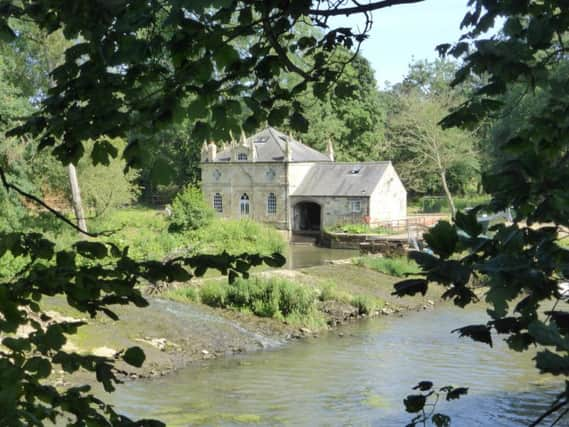Visit restored 18th century mill now generating electricity in Malton beauty spot


When I first came across its then-overgrown shell a couple of decades ago it had no roof and looked more like a long-abandoned folly.
I wasn’t too wide of the mark, as it turned out. I later discovered it had been built in the reign of George II as a working mill in the Gothic Revival style to actually resemble a folly.
Advertisement
Hide AdAdvertisement
Hide AdThe architect was said to be John Carr, whose best known works include Harewood House and York’s splendid Palladian crown court. It may seem odd that he would have taken on a humble corn mill, but to understand the reason visitors to the mill should simply look across to the east bank of the Derwent, where stands the Grade I listed Jacobean mansion of Howsham Hall.
When the hall was passed by marriage to the Cholmeleys of Whitby Abbey, Carr is believed to have supervised rebuilding work and decided that the extensive riverside parkland needed a focal point such as a then-fashionable folly. And so an earlier mill was replaced with today’s grand structure.
These days it resembles how it would have appeared on Carr’s drawing board in 1755 with ornate crocheted finials, ogee arches and quatrefoils.
Advertisement
Hide AdAdvertisement
Hide AdMaking my first visit to Howsham Mill since it was restored by the Renewable Heritage Trust in 2007, I was surprised to find it looking so pristine, since in my mind’s eye I could still see sycamores sprouting at unlikely angles from the stonework during my first visit.
It hadn’t milled a bag of flour since 1947 and the old undershot water wheel was useless. That was replaced, not to drive the grinding stones but connected via a gearbox to an electricity generator. An Archimedes’ Screw was also installed to increase the output and the mill began selling to the National Grid in 2010.
A second – larger –screw was added last year.
Usually the mill is full of activity because of its new role as an environmental study centre, run by volunteers, it is the perfect place to learn about renewable energy and local wildlife.
During my visit, I walked around the riverbank looking for evidence of otters. They are known to be here and the tell-tell sign is usually the presence of spraints or droppings. But I was out of luck.
Advertisement
Hide AdAdvertisement
Hide AdA heron lifted itself lazily out of the shallows and uttered a remonstrating croak at being disturbed, and moments later a kingfisher darted along the river, a flash of turquoise in the bright sun.
There are few more pleasant riverside locations in the whole of Yorkshire.